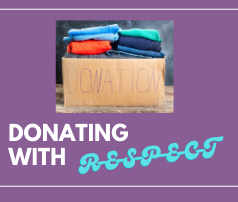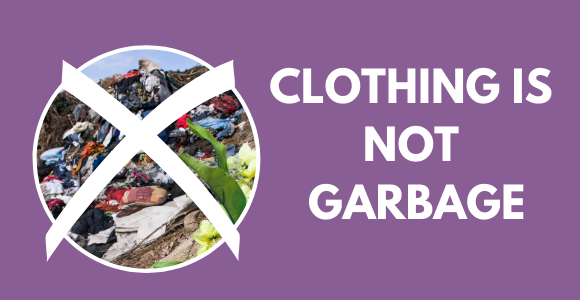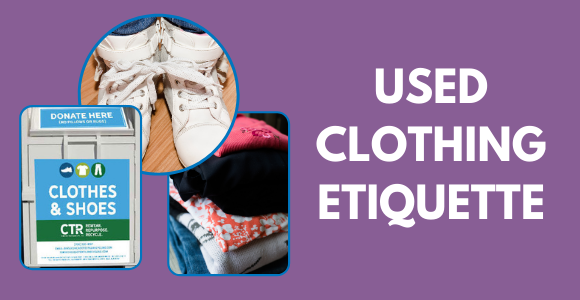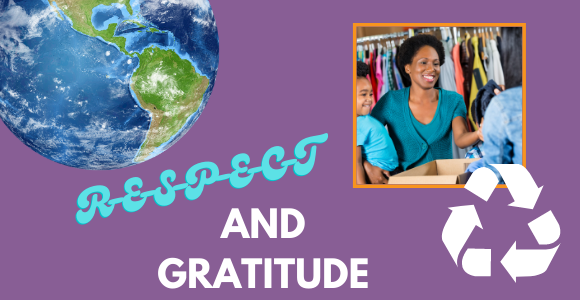 Green Benefits
Green Benefits
Choose Consciously

What does it mean to choose consciously? And why is it important? Here at Chicago Textile Recycling, we educate readers around and encourage textile recycling, but also want our readers to be mindful of the clothes and textiles they add to their closet when in need of purchasing new (to you) items.
“So what is a conscious closet? A conscious closet is a wardrobe built with greater intention and awareness of our clothes, where they come from, what they’re made out of, and why they matter.” (Cline, p 5)
Conscious closets are made up of timeless pieces, secondhand steals, vintage, and quality items. They are thoughtfully created with textile workers’ quality of life, textile sustainability and environmental repercussions in mind. They are all unique and reflect each of our personal styles.

Why Choose a Conscious Closet? Less is Best
“Less is a boon for the planet. It is the single most effective way we can reduce our fashion footprint. The vast majority of the clothing industry’s environmental toll happens while manufacturing new clothes, specifically in the process of turning fiber into fabrics.” (Cline, p 51)
Textile recycling helps keep clothing out of landfills and reduce greenhouse gas emissions. Buying sustainably reduces the environmental impact greatly, but as stated above, the very best way to help our planet is to simply buy less.
According to a study in 2018, Americans “have the second highest percentage of unworn clothes: 82 percent of their items never saw the light of day last year.” (Read more here)
If we are only utilizing 18% of the items in our closet, why do we continue to buy more?
“Our closets are meant to hold the beautiful things that we are excited to wear. But they’ve been hijacked and turned into dark recesses for our impulse buys and fashion regrets, and clothes that we don’t like, that don’t work, that don’t fit, and that just need to go.” (Cline, p 15)
Fast fashion is part of the problem. The fashion industry changing trends not only every season, but nearly every week creates this desire to constantly purchase new trending items nearly every week. It is impossible to keep up and creates immense waste. But fast fashion is only part of the problem. There is also a responsibility the consumer needs to take to resist constantly purchasing new pieces. One idea Cline gives in her book is taking a “fashion fast”.
A fashion fast is a “full and intentional break from buying new clothes and the perfect way to kick off the Art of Less.” (Cline, p 53) During the fast, you can: tackle wardrobe repairs, shop your closet, and/or take a capsule wardrobe challenge. (p 55)

A Capsule Wardrobe
One of the ideas Elizabeth Cline gives in her book is creating a capsule wardrobe. This idea has been put to use in numerous fashion blogs, and similar to the idea of a 30 day, 30 items challenge mentioned here but more permanent. “A capsule wardrobe is a small, perfectly planned-out, tightly edited wardrobe of versatile clothes. It’s a wardrobe distilled to its essence, with no extraneous pieces…What defines a capsule wardrobe is not its smallness but the versatility and intentionality of its contents.” (p 102)
Cline discusses further how to create a capsule wardrobe for your personal fashion style and how it is something that can be formed and modified over the years. Put simply, it begins with cleaning out your closet, choosing primarily pieces that can work with many different items in your wardrobe. And then moving forward, pursuing sustainable, or secondhand/vintage pieces to add in. It is about being intentional with what you own, and showing respect to your clothes, even the less quality pieces, taking time to mend and later recycle them.

Choose Quality over Quantity
In addition to constantly changing trends, fast fashion has also reduced the quality of textiles in their pursuit of making the most clothing for the lowest price. Though many companies have pledged to increase wages and conditions for their workers and produce clothing more sustainably, it continues to be a widespread problem. When purchasing new pieces for your closet, we encourage our readers to choose pieces from companies that are pursuing these positive changes.
“Good-quality clothing is good for the planet because it lasts. But quality also lasts because it’s so damn compelling. It’s that essence that draws you to a garment again and again.” (p 57)
At the end of the day, we want to feel good in what we wear. We want our clothes to fit well and to represent our personality and style. Why waste precious money and time buying textiles that sit in your closet for years unworn? We encourage each of you, dear readers, to choose consciously. Choose with intentionality. And please recycle your textiles.




